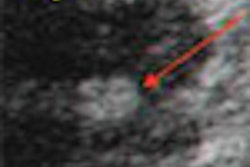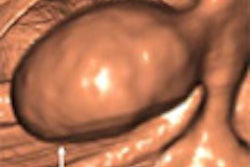Cranial Neuroimaging and Clinical Neuroanatomy: Magnetic Resonance Imaging and Computed Tomography by Hans-Joachim Kretschmann and Wolfgang Weinrich, 3rd ed.
Thieme, New York, 2004, $199.95
This new version attempts to expand on the previous edition, while still emphasizing structure and function of the brain. This text may benefit the pre-med or medical student taking an introductory neuroanatomy course, but will prove less beneficial for someone who is already knowledgeable in these areas.
The introduction is an overview of anatomic localization methods. The subsequent chapter provides an atlas of MR and CT images, depicting basic intra-cranial and extra-cranial anatomy. This is followed by a chapter devoted to guiding referring clinicians to the appropriate neuroimaging test.
The remainder of the text focuses on an anatomic description of the brain, including sensory, motor, special sensory, autonomic, and paracrine pathways and fiber tracts. Sections devoted to vascular and functional neuroanatomy are new.
The highlight of this edition includes the voluminous, high quality drawings and diagrams. These are interleaved with cross-sectional MR and CT images to reinforce anatomic localization. Complex neuronal pathways and fiber tracts are color-coded and well delineated on large, clearly depicted illustrations. When pertinent, clinical case vignettes are presented to correlate anatomy with clinical presentation and resultant neurologic deficit.
Cranial Neuroimaging and Clinical Neuroanatomy has a few but notable weaknesses. As a practicing neuroradiologist, I found some of the text a bit simplistic and redundant. The same information could have been presented in half the volume of pages. Combing color-coded fiber maps with multiple tracts may have enhanced the text.
Also, the chapter devoted to imaging recommendations for our clinical colleagues contained some inaccuracies. For example, the authors state that non-contrast MR angiograpy has replaced conventional and digital subtraction angiography. This is misleading and may prompt the clinician to order superfluous imaging tests.
While Cranial Neuroimaging and Clinical Neuroanatomy has improved upon the second edition, I hesitate to recommend it to a radiologists or subspecialty neuroradiologists.
By Dr. Brian J. FortmanAuntMinnie.com contributing writer
February 9, 2005
Dr. Fortman is a neuroimaging specialist at Carolina Radiology Associates in Myrtle Beach, SC.
The opinions expressed in this review are those of the author, and do not necessarily reflect the views of AuntMinnie.com.
Copyright © 2005 AuntMinnie.com




















